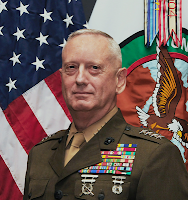
A colleague referred me to a 17 November 2011 article in the NY Times headed: “U.S. Military Goes Online to Rebut Extremists’ Messages” (see: http://www.nytimes.com/2011/11/18/world/us-military-goes-online-to-rebut-extremists.html?_r=2&ref=global-home). The article talks about a Digital Engagement Team (DET) reportedly established in 2008. The team chief, MAJ David E. Nevers was quoted as describing the teams mission to “counter extremist ideology, promote cultural awareness and explain U.S. interests,”.
The article provides a description of the team and the languages they cover (Arabic, Dari, Persian, Pashto, Urdu and Russian in case you’re interested). The Times compares the open efforts of the DET with the highly classified and generally shielded US military efforts in Computer Network Operations (CNO).
The DET’s engagements are “transparent and attributable” according to MAJ Nevers. The team’s approval cycle can take hours and while, as the Times points out, this isn’t ‘real-time’ it’s a heck of a lot faster than any approval cycle I’ve been a part of.
The article also refers to the State Department’s Digital Outreach Team as a complementary effort headed by Richard LeBaron, a former Ambassador to Kuwait, that organization’s coordinator.
There is no question that the DET is a laudable effort, complimented as both effective and cost-efficient by Brian Fishman, a counterterrorism analyst at the New America Foundation, a nonpartisan research group in Washington in that same article.
There are two reasons I’ve pulled this article for today’s post. First of all we hear so much negative crap about the influence war, it’s nice to see something positive for a change. However, perhaps more intriguing are the questions the DET raises to me:
1. Are they part of the MISO element to CENTCOM or the STRATCOM element, or are they an organizational hybrid?
2. To whom does the DET OIC (Officer in Charge) report to and what senior officers are in his rating chain?
3. Is this simply a ‘one off’ created because of Centcom’s AO?
4. Given that the DET’s actions are really global because their WWW AO is amorphous, how can a single Combatant CDR be given responsibilities for the other AOs?
5. Do they have a set of ROE and formal procedural guidelines?
6. While measures of effectiveness (MOE)are notoriously absent from this kind of endeavor, are we capturing the lessons learned and TTP in a systematic way to be applied elsewhere?
7. Are we aware of similar allied efforts and have we tried to promulgate this type of effort through NATO?
8. Does it make sense to set up a similar PACOM effort to address the Asian AO?
The DET passes the common sense test and appears to be a good idea whose time has come, I’m just wondering if we’re making the most of it.
Speaking of ‘making the most of it’, take some time to enjoy your family friends during the Holiday Season. As we learn, life is short and unpredictable. I’ve already lost a colleague to a fatal stroke this year and another is in a hospital after his stroke. Neither were military and both were part of the information security industry – the lesson is enjoy what you can with gusto.
Happy Holidays
Photo Source: CENTCOM official Website (http://www.centcom.mil/en/about-centcom/leadership/)

No comments:
Post a Comment